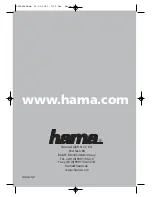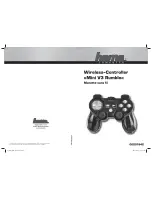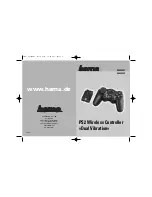
28
c
HAPTER
2:
Cooling System Design and Temperature Control
Model 335 Temperature Controller
2.10 Zone Tuning
Once the PID tuning parameters have been chosen for a given setpoint, the whole
process may have to be done again for other setpoints significantly far away that
have different tuning needs. Trying to remember when to use which set of tuning
parameters can be difficult. The Model 335 has a Zone feature as one of its tuning
modes that can help.
To use the Zone feature, you must determine the best tuning parameters for each part
of the temperature range of interest. The parameters are then entered into the
Model 335 where up to ten zones can be defined with different P, I, D, heater range,
manual output, ramp rate, and control input settings. An upper boundary setting is
assigned as the maximum temperature for that zone. The minimum temperature for
a zone is the upper boundary for the previous zone, and 0 K is the starting point for
the first zone. When Zone tuning is on, each time the setpoint changes, appropriate
control parameters are chosen automatically. Zone tuning works best when used in
conjunction with setpoint ramping (section 4.5.1.7.7).
Control parameters can be determined manually or by using the Autotune feature.
Autotune is a good way to determine a set of tuning parameters for the control sys-
tem that can then be entered as zones (section 2.9).
2.11
Thermoelectric
Devices
A thermoelectric device, sometimes referred to as a Peltier device, or a solid state heat
pump, is a device that takes advantage of the Peltier effect. When a DC current is
applied to the device, heat is transferred from one side of the device to the other. Heat
can be transferred in either direction by reversing the polarity of the current. Thermo-
electric devices are well suited for controlling temperatures near room temperature
since they have both heating and cooling capabilities. Since thermoelectric devices
are solid state, they are free of the mechanical vibrations associated with mechanical
coolers. Some thermoelectric coolers, in a stacked configuration, are capable of cool-
ing devices down to cryogenic temperatures (about 100 K). These are often used to
cool and maintain the temperatures of charge-coupled device (CCD) sensors.
Since thermoelectric devices are capable of both heating and cooling, they require a
controller that has a bipolar output to take full advantage of this. The Model 335 can
be configured for bipolar control on Output 2 in voltage mode. Closed loop PID control
works the same in bipolar mode as it does in unipolar mode except that the output
can go negative instead of stopping at zero. Refer to section 5.4 to setup Output 2 in
bipolar mode.
The Model 335 cannot drive a thermoelectric device directly. Most thermoelectric
devices require high current (approximately 3 A) and low voltage (typically < 10 V).
Output 2 is capable of ±10 V and ±100 mA. An external power amplifier is necessary
to boost the power up to a level that will effectively control the thermoelectric device.
Refer to section 3.7.5 for more information on using an external power amplifier with
Output 2.
















































